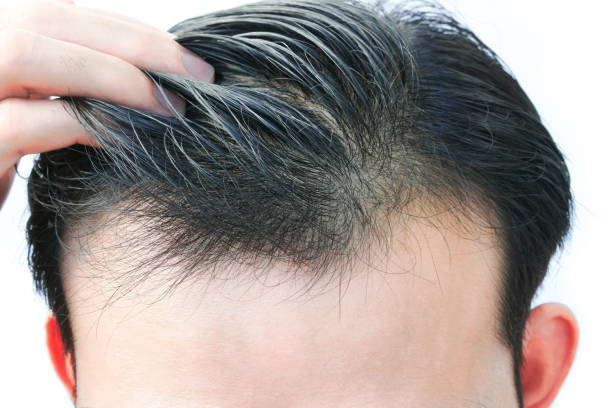Vitiligo is a skin condition that affects millions of individuals worldwide, characterized by the loss of pigmentation in certain areas of the skin. While it is not contagious or life-threatening, the visible nature of the condition can lead to emotional and psychological challenges for those affected. If you’re seeking a solution, understanding the nuances of vitiligo treatment in Abu Dhabi is essential for making informed decisions about your health and well-being. This guide aims to provide detailed insights into the treatment options, process duration, and what to expect, helping you navigate your journey toward clearer, more confident skin.
Understanding Vitiligo and Its Impact
What Is Vitiligo?
Vitiligo is an autoimmune disorder where the immune system mistakenly targets melanocytes—the cells responsible for producing skin pigment. This results in patches of depigmented skin that can appear anywhere on the body, often increasing in size over time. The exact cause remains unknown, but genetic, environmental, and immune factors are believed to play significant roles.
Psychological and Social Effects
The visible nature of vitiligo often affects an individual’s self-esteem and social interactions. Many people experience emotional distress, anxiety, or depression due to the cosmetic changes. Consequently, seeking effective treatment options becomes a priority for many individuals seeking to restore their skin’s natural color and improve their quality of life.
The Importance of Choosing the Right Treatment
Personalized Treatment Plans
Because vitiligo manifests differently in each individual, a tailored approach is often necessary. Factors such as the extent of depigmentation, location of patches, skin type, and personal preferences influence the treatment plan. Consulting with a qualified dermatologist is crucial to develop an effective strategy.
Goals of Vitiligo Treatment
The primary goal of treatment is to restore pigmentation and improve skin appearance. While complete repigmentation may not be guaranteed, many therapies can significantly reduce the contrast between affected and unaffected skin, leading to enhanced confidence and social comfort.
Common Types of Vitiligo Treatments
Medical and Topical Therapies
- Topical Corticosteroids: Used to suppress immune activity and stimulate repigmentation.
- Calcineurin Inhibitors: Such as tacrolimus or pimecrolimus, which modulate immune responses.
- Phototherapy: Controlled exposure to ultraviolet light to stimulate melanocyte activity in depigmented areas.
- Depigmentation Therapy: For extensive vitiligo, where remaining pigmented skin is lightened to match depigmented patches.
Surgical and Procedural Options
- Skin Grafting: Transplanting pigmented skin onto depigmented patches.
- Tattooing (Micropigmentation): Permanent pigmentation of affected areas, often used for small patches.
- Excimer Laser: Targeted laser treatment to stimulate repigmentation.
Emerging and Innovative Treatments
Research continues into new therapies, including stem cell therapy and gene therapy, aiming to provide more effective and longer-lasting solutions.
How Long Does Vitiligo Treatment in Abu Dhabi Take?
The duration of vitiligo treatment in Abu Dhabi can vary significantly depending on the chosen therapy, the extent of depigmentation, and individual response. Typically, patients undergo a series of sessions over weeks or months, with noticeable improvements often seen within a few months of initiating treatment. For example, phototherapy protocols may require multiple sessions per week over several months to achieve optimal results. It’s important to understand that vitiligo treatment often demands patience and consistency, as repigmentation can be gradual.
The Treatment Process: What to Expect
Initial Consultation and Assessment
The journey begins with a thorough evaluation by a qualified dermatologist, who assesses the extent and pattern of depigmentation, skin type, and overall health. This step is essential for devising a personalized treatment plan.
Developing a Customized Treatment Plan
Based on the assessment, the dermatologist recommends suitable therapies, which may include topical medications, phototherapy, or procedural interventions. The plan also involves discussing the expected timeline and setting realistic goals.
Treatment Sessions and Follow-Up
Regular sessions are scheduled according to the chosen therapy. During this phase, ongoing monitoring is vital to evaluate progress, make adjustments, and address any concerns. Patience is key, as results can take several months to become evident.
Maintenance and Long-Term Care
Post-treatment, ongoing skin care and sun protection are crucial to maintaining results. Some patients may require periodic booster treatments to sustain pigmentation and prevent relapse.
Factors Influencing Treatment Outcomes and Duration
Extent and Location of Vitiligo
Smaller, localized patches tend to respond more quickly and effectively than widespread depigmentation, which may require more intensive and prolonged treatment.
Skin Type and Color
Individuals with darker skin tones may notice quicker repigmentation due to higher melanocyte activity, while lighter skin tones might experience different response rates.
Patient Age and Overall Health
Younger patients often respond better to treatments, and overall health can influence the speed and success of therapy.
Compliance and Lifestyle
Adherence to prescribed treatments and lifestyle recommendations, such as sun protection, significantly impact outcomes.
Preparing for Your Vitiligo Treatment Journey
Setting Realistic Expectations
Understanding that complete cure may not always be possible is important. The goal is often to improve appearance and boost confidence.
Maintaining Open Communication
Regular follow-ups and honest discussions with your dermatologist help optimize treatment and address any concerns promptly.
Lifestyle Adjustments
Protecting skin from excessive sun exposure, avoiding skin trauma, and maintaining a healthy lifestyle support treatment success.
FAQs about Vitiligo Treatment
How long does it typically take to see results from vitiligo treatment?
Results can vary based on the treatment type and individual response. Generally, noticeable improvements may take anywhere from 3 to 6 months, with some therapies requiring ongoing sessions over a year or more.
Is vitiligo treatment permanent?
While some treatments can lead to long-lasting repigmentation, vitiligo may relapse, especially if the underlying autoimmune activity persists. Maintenance therapy and lifestyle adjustments can help sustain results.
Can vitiligo be completely cured?
Currently, there is no definitive cure for vitiligo. However, many treatments can effectively manage the condition and improve skin appearance, helping individuals regain confidence.
Are there any non-invasive options for vitiligo treatment?
Yes, non-invasive options like topical medications and phototherapy are commonly used. Procedural interventions, such as micropigmentation, offer permanent solutions for small patches without surgery.
Conclusion
Choosing the right vitiligo treatment in Abu Dhabi involves understanding your specific condition, exploring appropriate therapies, and maintaining patience throughout the process. With advancements in dermatology and personalized care, many individuals experience significant improvements, leading to enhanced self-esteem and quality of life. Consulting with a qualified specialist is a vital first step toward achieving the best possible outcome for your skin health.




